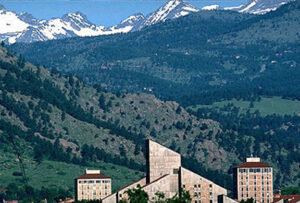
Incoming US President Joe Biden will have a large and long agenda of things he has to reform, reset and restart in his first 100 days in office. None more important for the global climate than the US’s re-entry into the Paris Climate agreement, which his predecessor Donald Trump exited the country out of . When Biden signed the US’s intention to re-enter the Paris Climate agreement on his first day in office, the world sighed a breath of relief.
Todd Stern, who was the lead US negotiator in Paris at the time, commented in the Guardian[1] that “rejoining Paris is just the first step, but it’s a big first step.”
It is also rumored that the Biden White House wants to block the Keystone XL pipeline, another thorn in the eye of anyone in the US with a mind and heart for green and sustainable development.
Although it is to be expected that the diverse and future-looking incoming White House administration will bring new focus to sustainable development goals both in the US and as a global leader, Biden will first focus on dealing with the Covid-19 pandemic of course. This has some green leaders fearful that sustainability goals might be taking a back pedal, and that could be very dangerous, as the point where climate change can no longer be turned back, is fast approaching.
So fast in fact that many have started to wonder as from what moment Earth will no longer be livable. Some say 2050 is that point of no return.
Global warming
When one assesses the risks to national security in case of rising tides and growing natural disaster because of climate change, it seems that mankind is not doing enough.
Professor Mauro F. Guillen for example, in his recently published book 2030: How Today’s Biggest Trends Will Collide and Reshape the Future of Everything[2], starts the opening pages by predicting a Europe hotter than ever in 2030 and an Asian subcontinent filled with climate refugees. Not a pretty picture to look forward to.
In a United Nations assessment of the risks to national security in the worst case scenario for climate change, the ‘high-end’ outcome, that is to say doing nothing about it, means that our current actions as a species would remain insufficient on a global scale to contain global warming below. +2 ° C (the target of +1.5 ° C seems increasingly impractical). According to the UN study, the future of human civilization, the future of your children and your children’s children, both in the short and medium term would be clouded by wars, famines, epidemics and droughts.
This period, which would be beyond the point of no return as from 2050, would be brief in comparison with the centuries-old history of our species: as it is now just three decades away. Imagine that, the world we know today, (relatively) at peace for 70 years, would be brought to its knees in 30 years unless we act.
Destruction of ecosystems
Politicians, policymakers and scientists are still insufficiently aware of the accumulation of various crises. The planet is in much worse shape than they realize. This alarm cry comes from a group of scientists, mainly ecologists and biologists from Stanford University in the US, among others. The threats are so great that they are difficult even for experts to comprehend. The group, including prominent ecologist Paul Ehrlich, said in a report published in the beginning of 2021 that the point of no return kept creeping closer and closer as mankind fails to act.
The researchers foresee mass migration due to climate change, more pandemics and surging conflicts about raw materials. If you think that the fact that Covid-19 vaccinations are foreseen for the First World (the US and Europe) in front of all others is bad, just wait until you comprehend what will happen when climate change kicks it up a notch.
Fareed Zakaria, the esteemed author and presenter on CNN, repeated this warning in his newest book ‘Ten Lessons For A Post Pandemic World’[3].
Admittedly, there are regular troubled voices, such as from UN reports, that a million species are on the brink of extinction and that the earth is heading for more than two degrees of warming.
Slowness
There is no lack of research on this, but scientists see far too little action to do something about it. The various crises that are unfolding right in front of our eyes – biodiversity, climate and health – reinforce each other and put human well-being at risk. This is not getting through enough.
The slowness of action can partly be explained by the inability of humans to think long-term, to really realize that emissions and pollution now lead to major, irreparable damage. Moreover, people tend to be optimistic about climate change, thinking that it will all work itself out. Above all, the scientists want to wake up the world and not just send out a fatalistic message. There is enough working policy in the field of climate, nature and food, they say. Only it hardly ever happens, judged by the amount of problems facing humanity.
In any case, it is necessary to overhaul capitalism in order to combat the destruction of ecosystems and the living environment. Throw out continuous economic growth, put a high price on pollution, limit the power of large companies and bring the use of fossil fuels to zero as soon as possible, is the advice that is mostly being provided.
A different economy must be accompanied by more education, more equality and a better position for women. The standard of living in the wealthy West may decline, but it will spread welfare more fairly around the world.
Small actions
Meanwhile capitalism and the need for ever greater consumption drives mankind ever closer to a natural disaster from which there seems no return. All this scaremongering leads one to wonder, what can I do about it all?
Well, you may not realize this but even small actions like those of a single person can have huge consequences. People could choose to drive greener cars, eat less meat, buy sustainable products or simply take the bike to work. Small steps, but in the end they will make a big difference and help you change the mindset of your children and your children’s children.
If you set an example for your friends, your family, for your social media outreach that you care about the climate by consuming sustainable goods and by caring about your carbon footprint, you can already help nature recover. Although we will go through many more years of ravaging wildfires, exceptional cyclones and tropical storms, longer monsoon seasons and will see climate refugees, if we all do our part, we can help earth recover.
Sustainable consumption
If next time you need to get groceries you would at least try and purchase locally grown foods, this is a good start. Furthermore, in order to get closer to earth and feel nature between your fingers, you can always start a small garden. Even in an urban environment, where most of us live nowadays, this is possible. On the website of of my friend Macgyver, you can purchase sustainable products, made from bamboo and cork, that will give you a fresh start and get you closer to nature. 70% of all products sold on the site come from sustainable or recycled sources.
I have grown tomatoes on the terrace of my small city apartment thanks to his products and am glad whenever I can put something I have seen grow from seed to plant in my evening meals.
So coming back to the original question, is earth still livable in 2050? It can be if we all work for it. President Biden has made a fresh start for the earth and so can you.
Start small, but start today.
Emerging Green is a small family business with a eye on sustainability. Learn more about us here.
[1] https://www.theguardian.com/environment/2021/jan/20/paris-climate-accord-joe-biden-returns-us
[2] https://www.amazon.com/2030-Biggest-Collide-Reshape-Everything/dp/1250268176
[3] https://www.amazon.com/Lessons-Post-Pandemic-World-Fareed-Zakaria/dp/0393542130
Source: https://usgreentechnology.com/is-earth-livable-in-2050/
- Action
- advice
- Agreement
- Amazon
- among
- around
- biden
- Biggest
- business
- buy
- capitalism
- carbon
- carbon footprint
- care
- cars
- change
- Children
- City
- Climate change
- closer
- CNN
- coming
- Companies
- consumption
- COVID-19
- COVID-19 pandemic
- Current
- day
- dealing
- Development
- disaster
- Donald Trump
- eat
- Economic
- Economic growth
- economy
- Ecosystems
- Education
- Emissions
- Environment
- Epidemics
- equality
- Europe
- experts
- eye
- facing
- family
- FAST
- First
- Focus
- food
- Forward
- fossil fuels
- fresh
- future
- Global
- global warming
- good
- goods
- great
- Green
- groceries
- Group
- Grow
- Growing
- Growth
- Health
- High
- history
- House
- How
- HTTPS
- huge
- Humans
- Including
- IT
- Joe Biden
- large
- lead
- LEARN
- locally
- Long
- major
- materials
- meals
- Meat
- Media
- medium
- million
- national security
- order
- Other
- Others
- Overhaul
- pandemic
- Pandemics
- paris
- People
- picture
- planet
- policy
- power
- president
- president joe biden
- price
- Products
- purchase
- Raw
- Recover
- refugees
- relief
- report
- Reports
- research
- Risk
- Scale
- scientists
- security
- seed
- set
- Short
- small
- So
- Social
- social media
- sold
- stanford
- Stanford university
- start
- started
- Study
- Sustainability
- sustainable
- Target
- The Future
- Thinking
- threats
- time
- Trends
- trump
- UN
- United
- united nations
- university
- urban
- us
- US President
- VOICES
- wait
- Website
- Welfare
- West
- White House
- WHO
- Women
- Work
- world
- years
- zero






